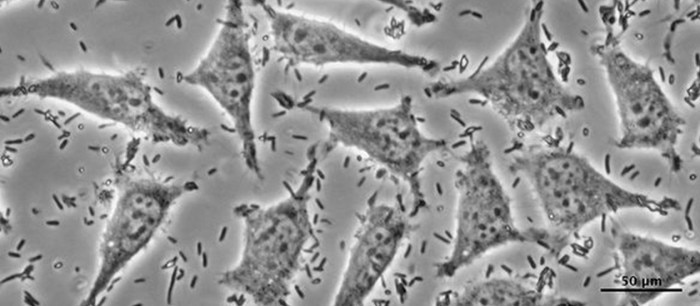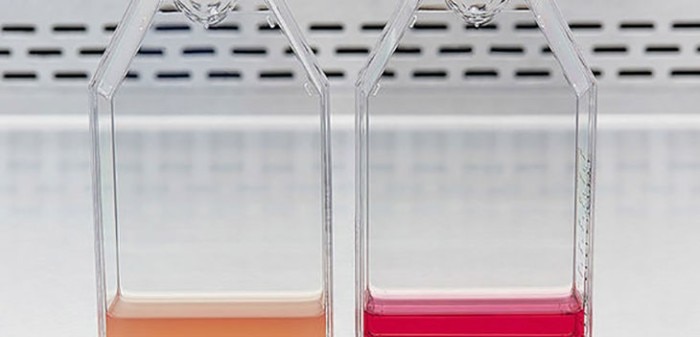メニュー
JP | JPY
-
-
-
- Challenges and Chances: A Review of the 1st Stem Cell Community Day
- Summertime, and the Livin’ Is Easy…
- Follow-on-Biologics – More than Simple Generics
- Bacteria Versus Body Cells: A 1:1 Tie
- Behind the Crime Scene: How Biological Traces Can Help to Convict Offenders
- Every 3 Seconds Someone in the World Is Affected by Alzheimer's
- HIV – It’s Still Not Under Control…
- How Many Will Be Convicted This Time?
- Malaria – the Battle is Not Lost
- Physicians on Standby: The Annual Flu Season Can Be Serious
- At the Forefront in Fighting Cancer
- Molecular Motors: Think Small and yet Smaller Again…
- Liquid Biopsy: Novel Methods May Ease Cancer Detection and Therapy
- They Are Invisible, Sneaky and Disgusting – But Today It’s Their Special Day!
- How Many Cells Are in Your Body? Probably More Than You Think!
- What You Need to Know about Antibiotic Resistance – Findings, Facts and Good Intentions
- Why Do Old Men Have Big Ears?
- The Condemned Live Longer: A Potential Paradigm Shift in Genetics
- From Research to Commerce
- Chronobiology – How the Cold Seasons Influence Our Biorhythms
- Taskforce Microbots: Targeted Treatment from Inside the Body
- Eyes on Cancer Therapy
-
-
-
-
-
- Challenges and Chances: A Review of the 1st Stem Cell Community Day
- Summertime, and the Livin’ Is Easy…
- Follow-on-Biologics – More than Simple Generics
- Bacteria Versus Body Cells: A 1:1 Tie
- Behind the Crime Scene: How Biological Traces Can Help to Convict Offenders
- Every 3 Seconds Someone in the World Is Affected by Alzheimer's
- HIV – It’s Still Not Under Control…
- How Many Will Be Convicted This Time?
- Malaria – the Battle is Not Lost
- Physicians on Standby: The Annual Flu Season Can Be Serious
- At the Forefront in Fighting Cancer
- Molecular Motors: Think Small and yet Smaller Again…
- Liquid Biopsy: Novel Methods May Ease Cancer Detection and Therapy
- They Are Invisible, Sneaky and Disgusting – But Today It’s Their Special Day!
- How Many Cells Are in Your Body? Probably More Than You Think!
- What You Need to Know about Antibiotic Resistance – Findings, Facts and Good Intentions
- Why Do Old Men Have Big Ears?
- The Condemned Live Longer: A Potential Paradigm Shift in Genetics
- From Research to Commerce
- Chronobiology – How the Cold Seasons Influence Our Biorhythms
- Taskforce Microbots: Targeted Treatment from Inside the Body
- Eyes on Cancer Therapy
-
-
JP | JPY

How to recognize bacterial contamination in your cell culture
Lab Academy
- 細胞生物学
- 細胞培養
- 汚染
- CO₂インキュベーター
- 細胞培養用消耗品
- エッセー
This article was published first in "Inside Cell Culture" , the monthly newsletter for cell culture professionals. Find more interesting articles about CO2 incubators on our page "FAQs and material on CO2 incubators" .
Macroscopic detection
- Increased turbidity of culture medium, medium appears cloudy.
- If medium contains phenol red as pH indicator, a rapid color change to yellow indicates a sudden decrease in pH
もっと読む
表示を減らす

Culture media contaminated with bacteria (left) appear turbid and yellow whereas non-contaminated media (right) appear clear and red.
Microscopic detection
Bacteria are much smaller than eukaryotic cells. They appear as dark rod-like structures, spheres or spiral structures under the microscope, and they may exist as single cells, in pairs, chains, or clusters.Bacteria can be visualized using phase contrast and 100x - 400x magnification. Phase contrast facilitates detection, especially at low contamination levels.
もっと読む
表示を減らす

Common shapes of bacteria: rod (bacillus), spherical (coccus), and spiral (spirilla).
Moving bacteria in cell culture
もっと読む
表示を減らす
Videos not loading, because cookies have been rejected. Change your

Some bacteria show active movement. You are not sure whether what you see in your culture are cell debris or bacterial contamination? Try to focus on one of the potential contaminants and follow it with your eyes. Cell debris or any precipitates from the medium will only fidget but mostly stay in the same place. Some bacterial strains will actively move away from their current position.
Low levels of non-moving bacteria with round shapes are especially difficult to distinguish from any harmless particles fidgeting between the cells. In this case, only time can bring certainty: without antibiotics the number of particles will increase overnight if a contamination is present. If no increase occurs without antibiotics, most likely harmless debris or precipitates are at fault.
Low levels of non-moving bacteria with round shapes are especially difficult to distinguish from any harmless particles fidgeting between the cells. In this case, only time can bring certainty: without antibiotics the number of particles will increase overnight if a contamination is present. If no increase occurs without antibiotics, most likely harmless debris or precipitates are at fault.
もっと読む
表示を減らす


